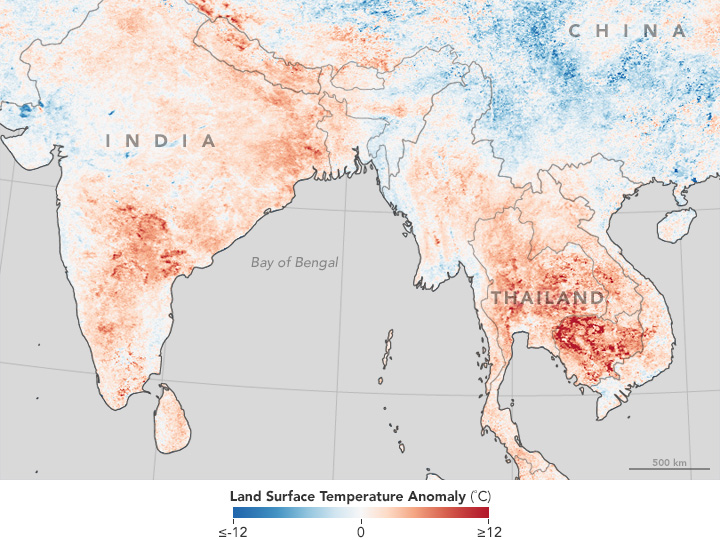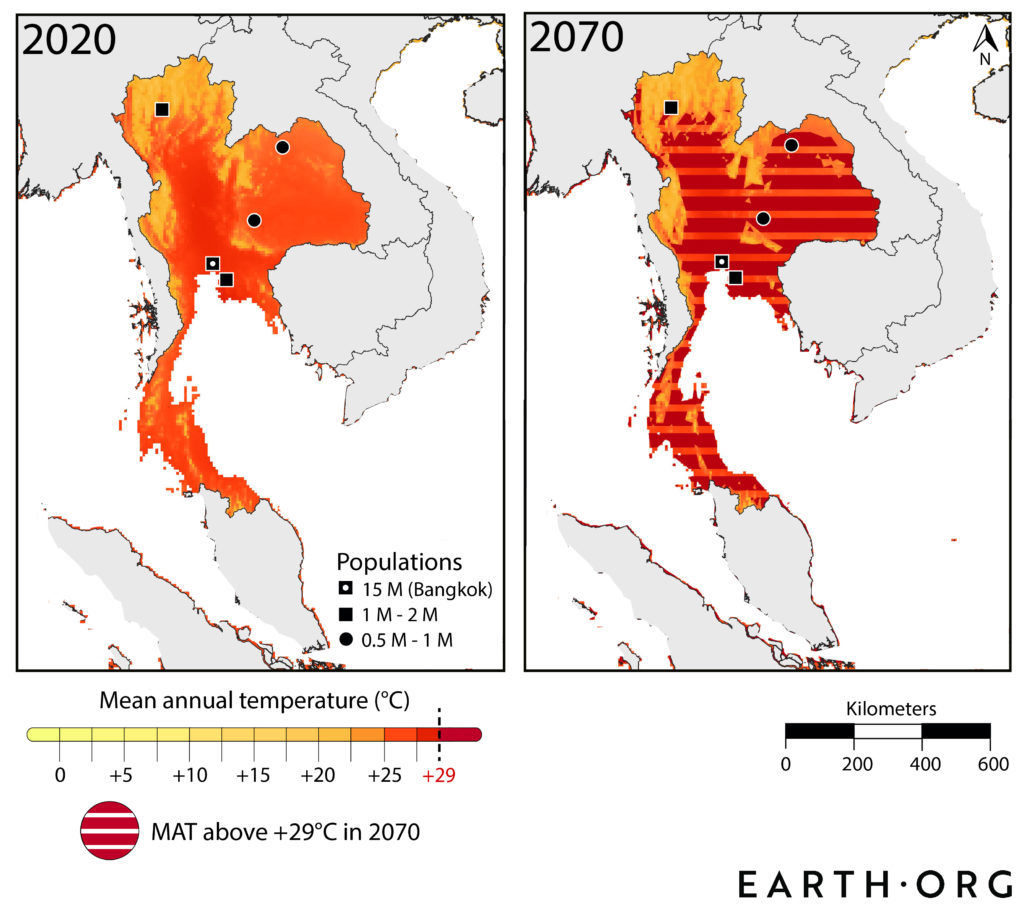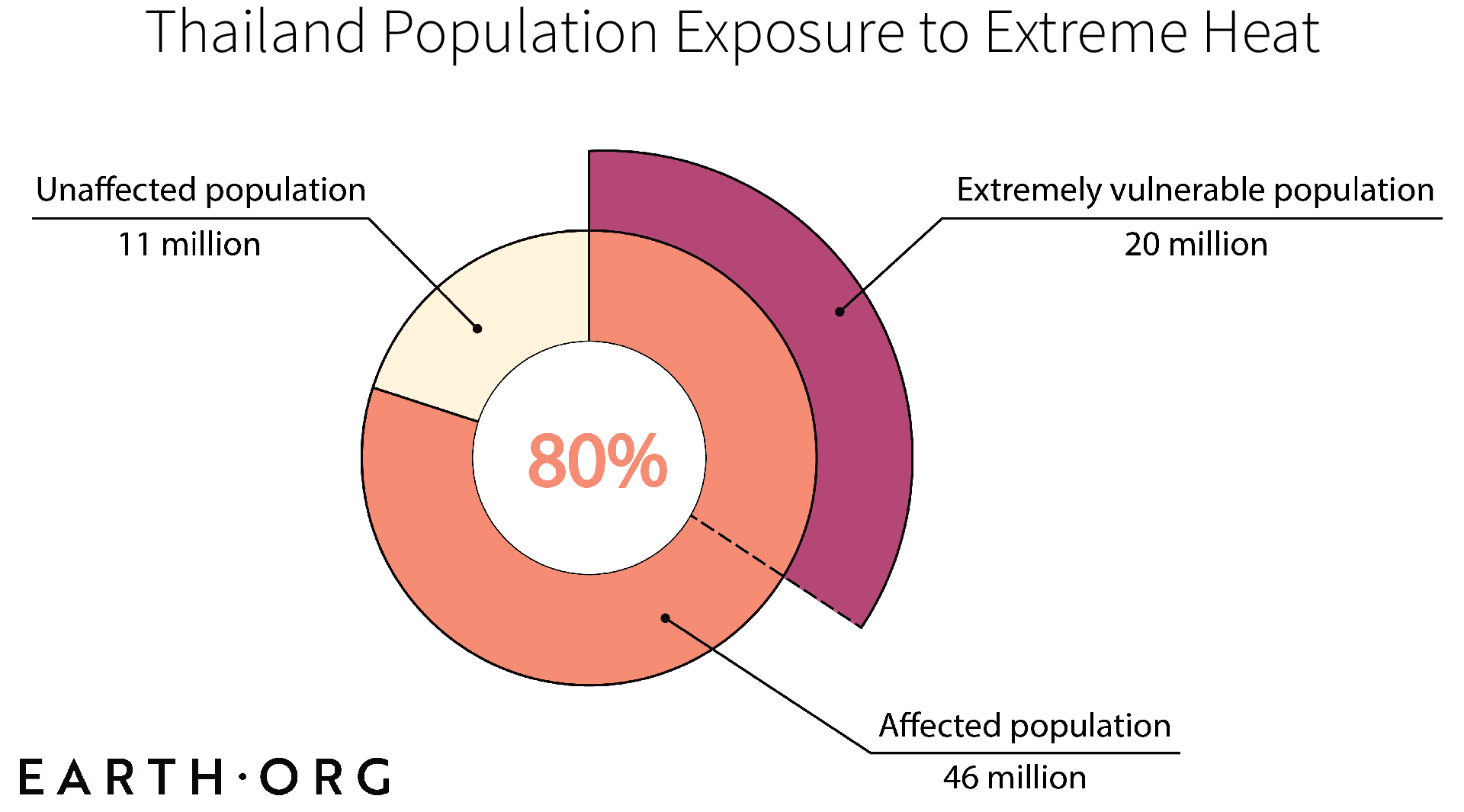Nineteen of the twenty hottest years on record have occurred since 2001, not including 2020 which is on track to top the list. Research has found that mean annual temperatures (MAT) above 29°C, currently found on 0.8% of the planet, could affect up to one third of the world’s population by 2070. According to a paper by Xu et al. 2020, Thailand could become too hot to live in.
—
This case study is based on the paper “Future of the human niche”, published in PNAS by Xu, Chi et al. (2020).
For thousands of years, humans have thrived in areas with MATs between ∼11°C to 15°C, which represent a fairly narrow subset of Earth’s climates. Nevertheless, large portions of our species reside in places with far higher MATs, and thus must deal with peak summer temperatures that challenge human limits.
From March to May, Thailand can experience heat up to 40°C, but in 2016 it suffered from its worst heatwave in 65 years.

NASA Earth Observatory image by Jesse Allen using data from the Land Processes Distributed Active Archive Center (LPDAAC). Caption by Kathryn Hansen.
The image above, captured by NASA’s Terra satellite, shows the land surface temperature anomalies in Thailand and India in April 2016, in other words the deviation from the average. As we can see, Thailand experienced heat up 12°C above average over much of its area, and at least 50 agglomerations matched or broke their daily temperature records (the highest was 44.6°C in Mae Hong Song).
According to a 2018 study on heatwaves in Thailand, even mild to medium strength episodes can cause quite some havoc. They bring the usual heat stress, burdening those with little recourse to air conditioning, but also increase the incidence of heart disease, pneumonia, and other infectious and parasitic diseases.
This is happening while Thailand’s average annual temperature stands at 26°C. A study published earlier this year, “Future of the human niche” (Xu et al. 2020), predicts that Thailand could find its average equal to that of the Sahara by 2070, above 29°C. The mildest heatwaves would rival today’s most extreme and essentially make Thailand too hot to live in year round.

All of Thailand’s largest agglomerations find themselves in the range of extreme heat projected to occur in the next few decades. As the country’s economy grows, it will surely implement preventive measures, but can they build large enough air conditioning networks to protect the vast majority of its population?

Thai population’s exposure to extreme heat. Extremely vulnerable category determined by the amount of people living in rural areas, or in poor living conditions and thus less access to heat mitigation. Chart by Simon Papai.
Other climate-driven issues in Thailand, namely droughts, floods, decreasing yields and sea level rise, are pushing the government to draft adaptation plans for the future. While the general direction of these strategies is obvious, their decisiveness remains to be seen. There are many obstacles in the form of political and economical strife that will hinder its ability to act efficiently.
This article was written by Owen Mulhern. Mapping by Simon Papai.
You might also like: Story by Numbers: Future Food Security










![The Statistics of Biodiversity Loss [2020 WWF Report]](https://u4d2z7k9.rocketcdn.me/wp-content/uploads/2020/12/lprwinkyTHB-544x306.jpg)





